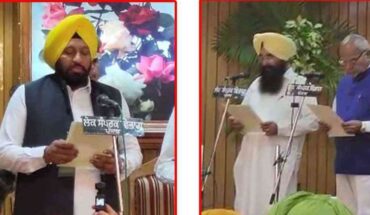New Delhi: To reduce pollutants, the Delhi government is set to implement cloud seeding, a technique aimed at generating artificial rain. Supported by IIT Kanpur, the initiative was discussed in a high-level meeting held at the Delhi Secretariat on Thursday.
In an effort to address the worsening air quality in Delhi, the government is turning to an innovative solution—cloud seeding, a technology that has successfully been employed in regions like Pakistan, the UAE, and Mumbai. Cloud seeding involves dispersing special chemicals into clouds to trigger rainfall, which helps bring down airborne pollutants and improve air quality.
A high-level meeting chaired by Environment Minister Manjinder Singh Sirsa at the Delhi Secretariat on Thursday provided a platform for experts from IIT Kanpur to present the cloud seeding process. Senior officials from various ministries and agencies were in attendance. The technology is expected to play a pivotal role in reducing the city’s air pollution, especially during the months when the pollution level peaks.
How Cloud Seeding Works
Cloud seeding involves the injection of chemicals like silver iodide into clouds to stimulate precipitation. As the artificial rain falls, pollutants suspended in the air are washed down, leading to cleaner, healthier air. The technique has been successfully applied worldwide, including in countries like Pakistan and the UAE, where it has proven effective in improving air quality.
Focus on Dust Pollution from Construction Sites
In addition to cloud seeding, the Delhi government is introducing stringent measures to control dust pollution, a significant contributor to the city’s overall pollution. Minister Sirsa announced new directives for construction sites, including the installation of PTZ cameras, video fencing, and PM 2.5 sensors. The government will also implement AI-driven surveillance to ensure compliance with pollution control norms and impose fines for violations.
Furthermore, all construction sites exceeding 500 square yards will be required to display approval from the Delhi Pollution Control Committee (DPCC). The government is focused on controlling dust pollution, which contributes around 30% to Delhi’s overall pollution.
Ongoing Pollution Control Efforts
The Delhi government is already implementing several measures to curb pollution, such as real-time air quality monitoring, smog towers, and bio-decomposer technology to manage stubble burning. Additionally, plans are underway to establish a permanent artificial rainfall system using natural ionization techniques.
Minister Sirsa reaffirmed the government’s commitment to tackling pollution through modern technologies. “We are committed to fighting air pollution in Delhi and providing future generations with a clean, safe environment,” he stated.
With these initiatives, the Delhi government is aiming for a significant reduction in air pollution, ensuring a healthier future for the city’s residents.






